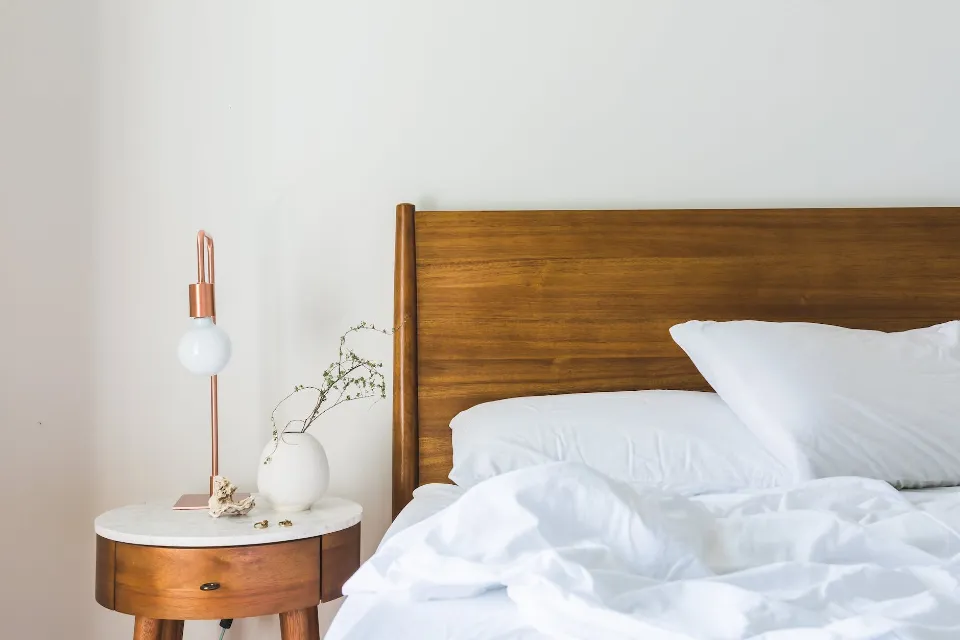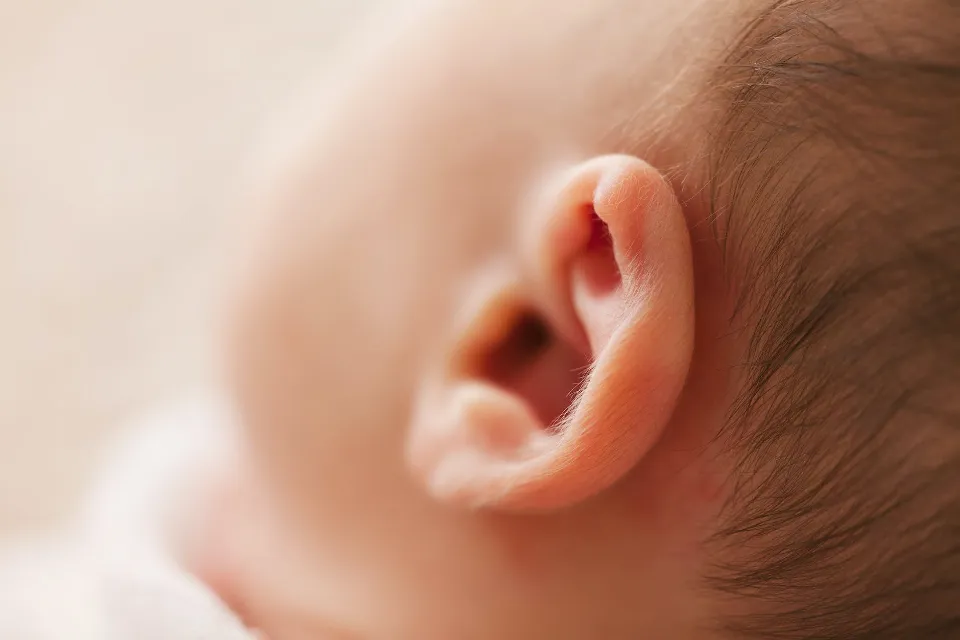Who else is prepared to elevate spring cleaning to a completely new level? We’re going to go over how to thoroughly clean a mattress, so open those windows, put your sleeves up, and get ready. Although the mattress is frequently overlooked during cleaning procedures, it receives more daily use than the majority of our furniture. If you don’t already deep clean your mattress twice a year, you should start now. Here is how to thoroughly clean a mattress.

Table of Contents
Why You Should Deep Clean Your Mattress
When it comes to shielding mattresses from moisture, messes, and dust, sheets and mattress pads fall short. Consider this: Every few weeks (ideally every two weeks), sheets and pillowcases are washed. So, if you haven’t washed the mattress, think about what might be concealed below the surface, inside, and on top of the mattress. Yikes.
According to studies, some allergies, colds, and illnesses may be brought on by bedding and mattresses. According to Amerisleep, sheets that are just one week old already have more bacteria on them than a bathroom doorknob. One study discovered that specific feathered pillows create ideal conditions for the growth of fungi. According to a different study, simply turning from one side to the other in the middle of the night can cause dust and dirt particles to become stagnant and fly into the air. Well…shoot.
The good news is that we’re about to show you how to thoroughly clean a mattress so you can go to sleep at night without worrying about bacteria, skin cells, pet dander, dust mites, fungus, and more, oh my!
How to Deep Clean Your Mattress
Step 1: Vacuum Thoroughly
A mattress must be thoroughly vacuumed, including the seams and edges (where bugs and mites like to hide), unlike a floor or carpet. It may take some time and several back and forth motions to thoroughly vacuum each area because you also need to vacuum the sides and underneath of the mattress.
Use a brush head like an upholstery attachment to vacuum your mattress safely and effectively.
Step 2: Sprinkle With Baking Soda
Although baking soda is a common component of household cleaning products, the application of baking soda to the mattress at this point is not to help clean it but rather to get rid of any unpleasant odors. To achieve this, liberally sprinkle baking soda over your mattress until a thin, patchy layer covers the surface.
In order for the powder to effectively absorb moisture and musty or foul odors, you should step away for at least two or three hours. Just keep in mind that the longer the baking soda is left on the surface, the better it works to eliminate odors from your mattress.
Step 3: Vacuum Again
As opposed to the initial vacuuming of your mattress, this time around you only need to remove the baking soda that is on the surface. However, it’s crucial to vacuum up all of the powder because it has been absorbing moisture and unpleasant odors from your mattress, which is, to put it mildly, gross.
To do this efficiently, start with one corner and work your way downward till the other corner. You can finish everything on time if you vacuum each section in a straight line!
Step 4: Make a DIY Natural Mattress Cleaner
When deep cleaning your mattress, you don’t need to use any special cleaners or laundry detergent. In fact, using abrasive cleaners or chemicals at all should be avoided, which is why we use a cleaning solution made entirely of natural ingredients.
To make Maid For You‘s Combine 1 liter of water,.frac12 of a cup of white vinegar, 2 lemons’ worth of lemon extract, and 1 cup of baking soda to make your own natural mattress cleaning solution. For fragrance, you can also add a few drops of lavender essential oil, however, this is optional. Once combined, transfer the mixture to a spray bottle and give it a good shake.
Step 5: Apply the Cleaning Solution and Scrub
Notably, the cleaning agent must never become completely saturated on your mattress. This entails using the “mist” setting on the sprayer to apply the cleaner sparingly rather than using the stream spray. Without worrying about covering every square inch of the mattress, spray sections of it.
After using the cleaning solution, gently scrub the material with any cleaning instrument that will lift dirt rather than forcing it deeper into the material (like a brush). For convenience and effectiveness, we prefer to wear a pair of microfibre gloves. Simply spray the cleaner on any dry spots you encounter and keep scrubbing. Never forget to flip the mattress over and clean the bottom and four sides of the mattress.
NOTE: You should periodically rinse and wring out the cleaning tool or gloves if they are picking up dirt during the cleaning process.
Step 6: Remove the Cleaner and Dry
Since the cleaning solution is all-natural, there is no harm in leaving traces of it, but it is best to remove as much of it as you can to avoid a persistent cleaner odor. The ideal tool for this is a clean, damp towel. All that is required is a quick top-to-bottom wipe of the material.
A mattress is a large (and frequently heavy) item, making it challenging to dry after deep cleaning. Nevertheless, the cleaning experts at Maid For You advise taking your mattress outside to dry under the sun. Naturally, a large piece of plastic or a bed sheet is required to place the mattress on in order to prevent dirt from adhering to the damp material. Permit the sun to dry both sides for at least 3 to 4 hours.

How to Get Rid of a Mattress Smell
An enzymatic cleaner, as previously mentioned, is best for removing odors that have persisted due to previous spills, accidents, or pets. Vinegar and water should do the trick, but should you find yourself at a loss for what to try next, consider this concoction from Mattress Insider:
- 1 teaspoon water
- 1 tablespoon vinegar
- 1 teaspoon laundry detergent
- 2 tablespoons baking soda
- 1 drop disinfectant
After that, spot treat the area once more with a thick layer of baking soda and, if possible, let it sit overnight before vacuuming it up. Cornstarch and baking soda should be combined if the smell is due to sweat or body odor. Cornstarch is useful for drying out oils, according to Mattress Insider.
Pro tip: You can absolutely add a few drops of your favorite essential oil to these mixtures or while adding the baking soda.
How to Remove Stains from Your Mattress
It is necessary to treat any stains on your mattress before using the cleaning solution on the fabric. Because any lingering discoloration will usually come out during the remaining scrubbing and cleaning steps, it is always best to take care of mattress stains first.
Here are two quick, detailed procedures for getting rid of two typical mattress stains.
How to Remove Urine Stains from Your Mattress
- Apply a mixture of one cup of hydrogen peroxide, two to three tablespoons of baking soda, and a small amount of dish detergent as a pre-treatment to the stain. Utilize a fresh, white towel and dip it in the mixture to blot the stain with the solution. Focus more on the stain’s outline because it tends to be the part of the discoloration that is the most difficult to remove.
- Check the stain for any lingering discoloration after the area has dried. If it’s there, take the following actions to treat it.
- Use a whisk to thoroughly combine 1 cup of water, 1 cup of hydrogen peroxide, and 2 to 3 tablespoons of detergent to produce foam.
- Cover the entire urine stain on your mattress by scooping out the foam with a spoon. Make sure the foam hasn’t completely dissolved by setting a timer for 30 minutes and checking afterward. In that case, reapply foam to the stain.
- After 30 minutes, blot the area with paper towels to remove any remaining moisture.
- Air-dry the mattress if you can. If necessary, repeat steps three through five.
How to Remove Blood Stains from Your Mattress
- To remove as much color as possible, blot the stain with paper towels. After that, allow the stain to completely dry.
- Rub the stain with a soap bar after running water over it.
- Apply hydrogen peroxide to a dry, white towel and gently dab the affected area. Blood stains shouldn’t be scrubbed because doing so will only spread the color.
- Make a paste out of salt, liquid dish soap, and hydrogen peroxide next. Don’t add too much liquid to the paste because it needs to be thick enough to coat the stains.
- 20 minutes should pass after the paste is applied before it is removed with paper towels.
- More hydrogen peroxide and a fresh towel should be applied in the end to completely remove the stain from the area.
Even though you might not see your mattress very often, the fact that you use it every day ought to be sufficient to convince you that it needs to be thoroughly cleaned. Make sure your mattress is clean, hygienic, and working properly as a routine task every six months!

Conclusion
The world is not going to end because your mattress has a few stains. Don’t frown if the mattress smells bad. Kärcher has everything you require to keep your mattress safe!
If you take the proper precautions and clean your mattress on a regular basis with the proper mattress vacuum cleaner and tool, you won’t need to replace it very frequently.
FAQs
How Do Professionals Clean Mattresses?
Before using chemical solutions to remove specific surface stains, a good mattress cleaning service thoroughly inspects the mattress. To kill dust mites and bacteria, high-temperature water is then injected, sucked away, or steam is used in bursts.
Can You Clean a Heavily Soiled Mattress?
Shampoo: To completely remove dirt and soil from the surface of the mattress, use an upholstery shampoo after vacuuming. If you don’t have upholstery shampoo, clean the entire mattress area with a solution of water and mild detergent.
How Do You Sanitize and Deodorize a Mattress?
After covering the mattress with baking soda, vacuum it up after it has been sitting there for 30 to 2 hours. How can a mattress be deodorized? The mattress can be deodorized by sprinkling baking soda on top. Let the mattress air out after you’ve vacuumed up the baking soda.
What is the Danger of Urine in a Mattress?
Given enough time, urine can grow mold because it contains bacteria. Urine contains urea, uric acid, and other potentially dangerous substances. Bacteria are responsible for consuming the urine residue and producing the ammonia that gets trapped inside your mattress.





